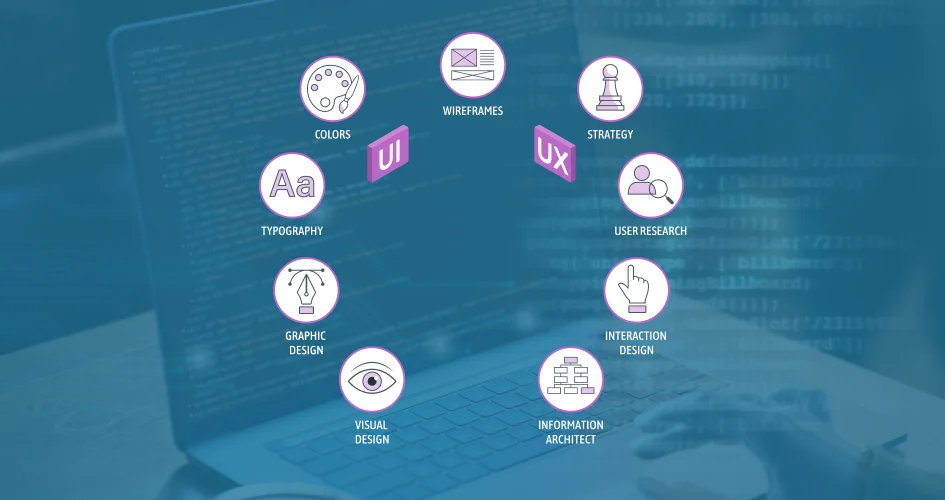The benefits of software development life cycle approaches make your challenging and complex software development tasks smooth and easy.
In fact, according to Zippia, businesses have experienced a 64% success rate using the Agile SDLC methodology while a 49% success rate using the Waterfall methodology.
So, in this article, we discuss the definition of SDLC, the advantages of using SDLC, and the need for an SDLC approach in software development.
The blog will help the following group of individuals:
- Startup founder looking to manage software development projects effectively.
- Software developers seeking to improve SDLC practices.
- Project managers searching for information about SDLC.
- IT-decision maker thinking to adopt SDLC models.
Let’s get started.
What is the Software Development Life Cycle?
The software development life cycle (SDLC) is a structured approach or framework that helps software development teams plan, design, develop, test, deploy, and maintain software applications.
The primary goal of SDLC is to produce high-quality software that meets or exceeds customer expectations while staying within budget and on schedule.
Traditionally, SDLC works on different methodologies to develop software, and the most common methodologies used by modern developers are Waterfall, Agile, and Scrum methodologies due to their flexible and iterative approaches.
Further, if you want to know about the software development life cycle in detail, then you can refer to our guide on what software development is with examples.
Now, the definition of SDLC lets us move to the section that showcases the benefits of SDLC in the software development process.
6 Major Benefits of Software Development Life Cycle (SDLC)
The benefits of SDLC make your software development streamlined, efficient, and quick.
Further, it helps software development teams and businesses in various ways, though in this section, we discuss 6 major benefits, and they are as follows:
#1. Enhances Product Quality
Being a leading software development company, we know the importance of quality products.
Thus, we recommend SDLC approaches to enhance software products due to their structured and iterative software development method.
SDLC promotes the early detection of defects and issues in the software by breaking down the development process into distinct phases, such as requirements analysis, design, coding, and testing.
Such detection allows you to identify problems at their source and mitigate the risk of failure at the initial stage of providing high-quality software products.
Further, the SDLC approach elevates product quality through the following approaches:
- Systematic and constant testing at every stage of software development.
- By validating requirements continuously with stakeholders to ensure the project aligns with expectations.
- Developing software with an iterative approach ensures your software is built in small increments, with each iterative is subject to testing and validation.
- By actively addressing defects during development, SDLC reduces the likelihood of critical issues arising after the software is released.
#2. Improves Project Management
SDLC initiates project development with a thorough understanding of the scope, objectives, and requirements.
Plus, before initiating the project, SDLC models encourage planning that ensures your goal and objectives are clearly defined and the project gets completed as planned.
Such an in-depth understanding of project requirements and robust planning improves project management and mitigates the risk of failure.
Here is the table that showcases how SDLC improves project management for developers and stakeholders during the software development process:
| Benefits | For Developers | For Stakeholders |
| Clear Project Scope and Objectives | Developers have a clear roadmap, reducing scope creep. | Projects align with business goals, ensuring ROI. |
| Detailed Requirements Analysis | Developers understand project requirements in detail. | Accurate resource allocation, preventing costly changes. |
| Structured Development Phases | Developers can focus on specific tasks within phases. | Improved risk management and change control. |
| Continuous Monitoring and Tracking | Issues are identified and resolved promptly. | Minimized cost overruns and schedule delays. |
| Risk Assessment and Mitigation Strategies | Proactive issue resolution and reduced project setbacks. | Effective risk management, ensuring project success. |
#3. Manages Risks Effectively
According to a report, 70% of projects fail due to unplanned project initiation, lack of resources, and technical challenges.
SDLC is designed and developed to mitigate such risks in the software development process. SDLC’s systematic and structural approach initiates the project with proper planning and practices different testing during every software development life cycle.
Such testing approaches identify potential project risks initially and significantly reduce the risk of project failure.
Further, the SDLC testing approach includes:
- Continuous monitoring
- Risk assessment and analysis
- Proactive mitigation strategies
- Documentation & Reporting
- Categorization and Prioritization
Types of testing SDLC offers:
- Requirements Testing
- Performance Testing
- Acceptance Testing
- Regression Testing
- Integration Testing
- Security Testing
- System Testing
#4. Enhances Communication and Collaboration
The prominent capability of SDLC is collaboration and communication among the stakeholders that drive success in project development and reduces the chance of failure.
The SDLC methodologies like the Waterfall model and Iterative model move projects step-by-step by collaborating and including the point of view of stakeholders, developers, project managers, and designers.
Such an approach in SDLC enhances communication and collaboration among the individuals working on the project and ensures everyone is on the same page.
Through prominent communication and collaboration, SDLC offers the following benefits:
- Prevents misunderstanding
- Brings everyone to the same table
- Creates collaborative work environments
- Outset clear roles and responsibilities of each team member
- Involves stakeholders that ensures project requirement aligns with their expectation
#5. Enables Efficient Resource Utilization
SDLC is not only about developing software systematically, strategically, and reducing risk, utilization of resources correctly is also important.
SDLC approach ensures the right allocation of resources, roles, and responsibilities to the team members.
That ensures that the right people are working on the task and accomplishing the project at the right time.
With evenly distributed work and allocating the right resources, the software development process streamlines and provides desired results aligning with objectives, requirements, and timelines.
Efficient resource utilization ensures the following benefits:
- Cost savings
- Enhanced productivity
- Higher quality outcomes
- Timely project completion
- Minimized resource bottlenecks
- Improved stakeholder satisfaction
#6. Flexibility and Adaptability
The flexibility to adapt and iterate on project requirements is a significant advantage offered by the Software Development Life Cycle (SDLC).
Depending on the chosen SDLC model, such as Agile or iterative approaches, teams can respond more to changing market conditions and evolving customer needs.
Many SDLC models, including Agile, are designed to be highly adaptive. Agile divides the project into smaller increments called “sprints” or “iterations.”
Such sprints adapt quickly and implement changes in the project that make the project more responsive, efficient, and aligned with customer needs.
The benefits of such flexible and adaptable nature of SDLC are:
- Responsiveness to changing requirements.
- Continuous improvement and innovation.
- Enhanced customer satisfaction.
- Efficient resource allocation.
- Reduced project risks.
So, here we end the benefits of SDLC in the next section. Let us discuss the need for the SDLC approach in the software development process.
What are the Needs of the SDLC Approach in Software Development?
Here are the reasons that showcase the need for SDLC in software development:
- SDLC enables detailed project planning, resource allocation, budgeting, and scheduling.
- SDLC’s approach to planning ensures that projects advance efficiently, meeting predefined goals and constraints.
- SDLC provides a structured framework for software development.
- It defines project scope and objectives, reducing misunderstandings.
- Mandates comprehensive documentation for transparency and compliance.
- Actively involves clients to align software with their needs.
Want to Know More About SDLC?
Connect with our software development experts; we are an established software development company with profound experience developing software using SDLC approaches.
In this blog, we discuss the benefits of SDLC and its need in the software development process that helps you streamline your decision-making and help you choose the right software methodology for your software development.
Feel free to connect with our skilled experts if you are still confused.




